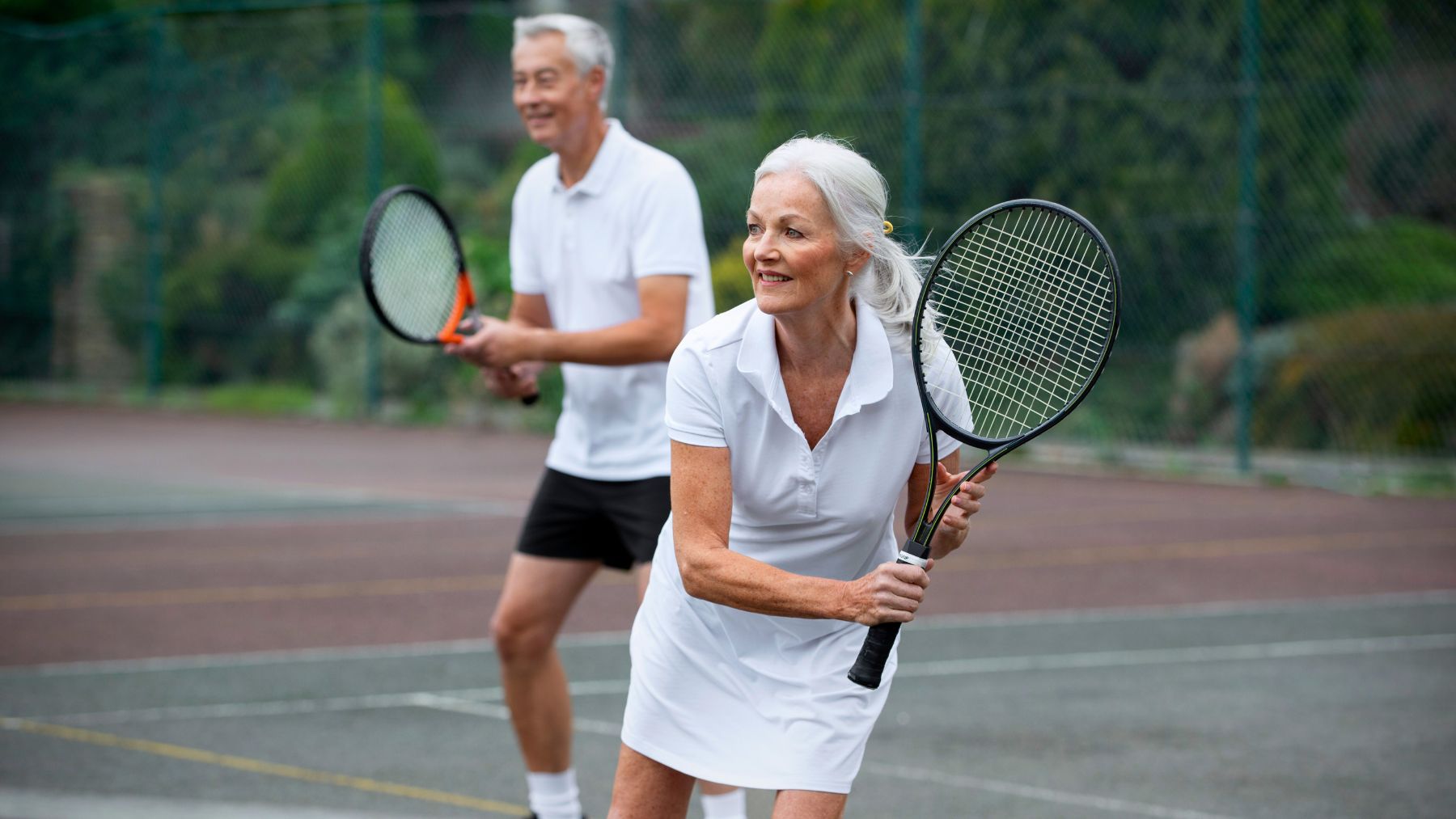Staying active after 60 doesn’t have to mean only walks or morning jogs. While both activities help with cardiovascular health, they may not offer enough variety to build coordination, quick reflexes, or balance. If you’re looking for a way to improve agility, there’s another option worth knowing about.
That option is paddle-tennis, a sport gaining popularity in the US for a reason. Padel is played in doubles on a smaller, enclosed court and blends elements of tennis and squash. It’s accessible, social, and effective for your physical and cognitive health. Plus, a study published by the NIH states that paddle-tennis can improve physical fitness and promote health in both senior adults and children.
Here, we’ll look at how it works, why it’s especially helpful for seniors, and how to get started if you’re new to it.
How paddle-tennis helps seniors improve agility
Paddle-tennis is typically played two against two, using solid paddles and a low-compression ball that keeps the pace manageable. The court is smaller than a tennis court and surrounded by walls, which means fewer long-distance sprints and more quick, agile movements in a confined space. That setup reduces impact on the joints while encouraging fast footwork and reaction time.
What makes paddle-tennis a great fit for older adults is how it combines physical movement with mental focus. Every point requires positioning, anticipating where the ball will go, and coordinating with your teammate. That mental engagement helps maintain cognitive sharpness and quick decision-making.
Physically, the stop-start movement in paddle-tennis builds lower-body strength, improves balance, and increases coordination. You’re changing directions, shifting your weight, and reacting fast to keep the rally going. That kind of movement directly supports agility to help you prevent falls and stay mobile in everyday life.
Beyond agility, paddle-tennis supports cardiovascular fitness, strengthens muscles, and improves flexibility. And most importantly, it’s fun to play. The rallies last longer than in tennis, and the game has a light, social energy that keeps people coming back.
Tips for seniors to get started with this sport
If you’re curious about trying paddle-tennis, it’s easy to begin, and several clubs and organizations in the US offer programs specifically for older adults. Here’s how to start:
- Look for beginner-friendly courts: Search for local padel clubs or community centers with dedicated sessions for seniors or newcomers. Many provide paddles and balls, so you can try before investing in gear.
- Wear supportive footwear: Choose shoes that offer grip and cushioning. Padel involves lateral movement, so stability matters more than speed.
- Warm up gently: Do a few dynamic stretches or light movements before stepping onto the court. Warming up helps your joints stay loose and reduces the risk of injury.
- Start slow and focus on control: Prioritize positioning and consistent hits. Quick footwork will come naturally as you get used to the pace.
- Play regularly: Aim for at least once or twice a week. The more you play, the more you’ll feel the benefits.
Paddle-tennis offers an enjoyable way to build agility after 60. You don’t need to run long distances or commit to intense routines. With a paddle, a few friends, and a bit of consistency, you can keep your body sharp and your reflexes ready.

